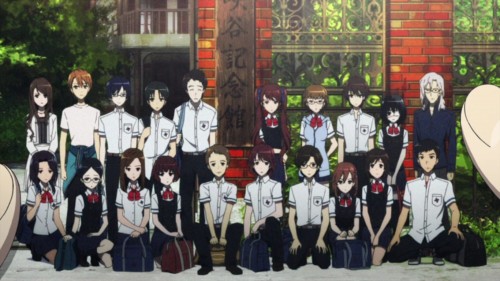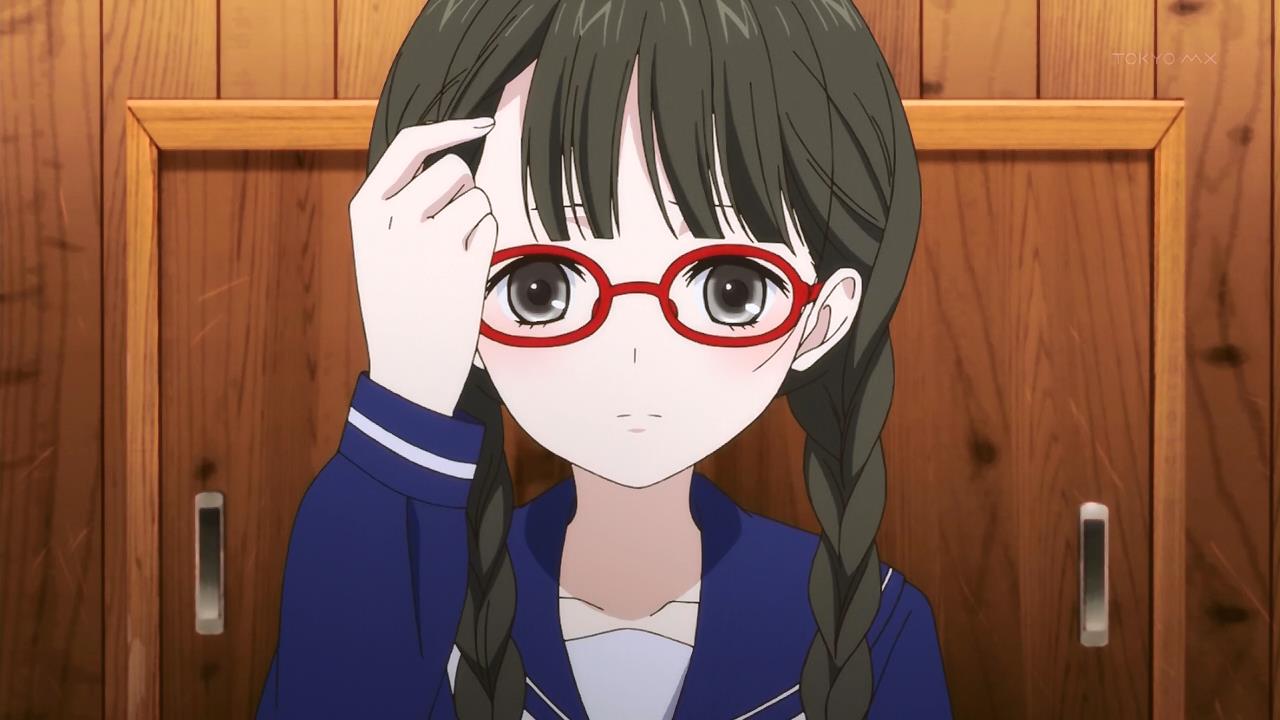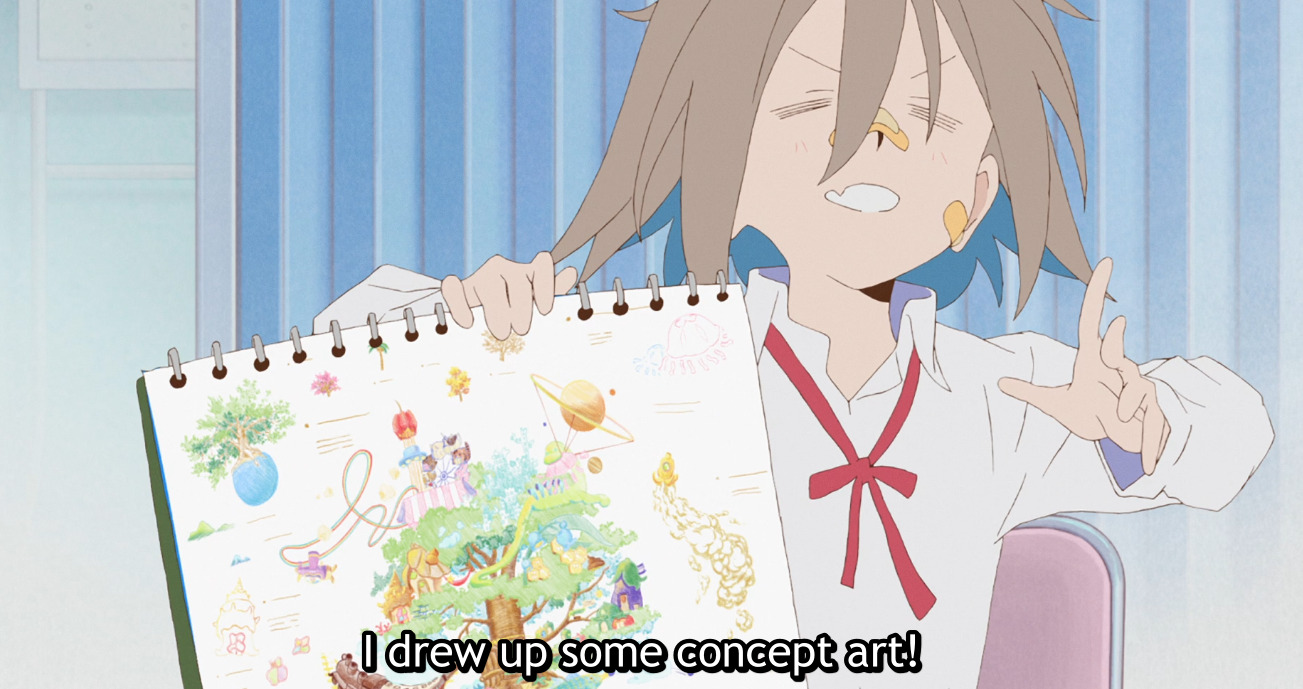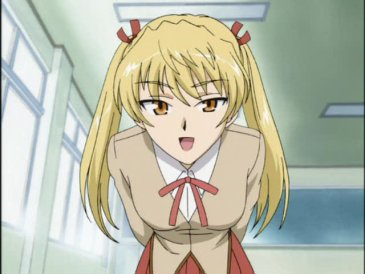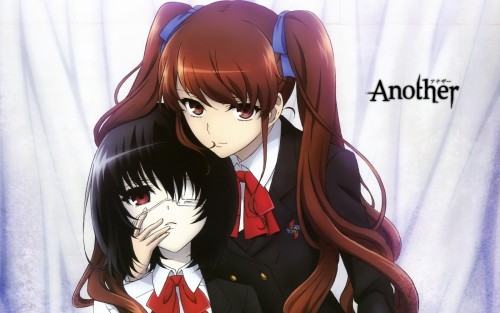
Another is a horror-mystery anime from 2012. I first saw it and reviewed it at the beginning of my blog writing. For Halloween, I added it to my watch list. The anime follows a middle-school class that’s cursed. Time-to-time, an extra person appears in the classroom. Whenever this happens, death begins to claim students and family members associated with the students. To remedy this, the class picks one student to ignore. That student ceases to exist, which keeps the curse at bay. This remedy is broken when transfer student Koichi meets and speaks with the girl selected to “cease to exist,” Mei Misaki. Together, Mei and Koichi have to work out the mystery of the curse before it kills them and everyone in their class.
The story keeps you guessing with its twists and turns. Only during the final reveal, do the hints click into place, just as a good mystery should do. The story examines how misinformation, fear, and desperation can make people act in ways that made me think of the book Lord of the Flies. Since I hadn’t seen the anime in around ten years, I couldn’t remember exactly how everything snapped together.
Another‘s Mei falls into the girl-with-an-eyepatch era of characters. Not that characters with eyepatches were anything new. Like many character design elements, eyepatches (usually the medical kind, and less of the of the pirate vintage) appear in cycles. Anime from 2011 and 2012 saw a good number of girl-with-an-eyepatch characters:
- Mei from Another, 2012
- Rikka from Love, Chunbiyo, & Other Delusions, 2012
- Ninth, Minene Uryuu, from Future Diary, 2012
- Laura Bodewing from Infinite Statos, 2011
- Arashi from As Long as There’s Love, It Doesn’t Matter If He Is My Brother, Right?, 2012
Other spans of time see other clusters of eyepatch characters as the design’s popularity comes and goes. Eyepatches lend mystery to a character. You wonder what happened or what the character hides in the case of Another‘s Mei. Medical eyepatches suggest something happened and make the audience feel more protective toward the character. Rikka in Love, Chunbiyo wears an eyepatch to protect her innocence. Mei hides a troubled past that can protect her and Koichi’s future. Pirate-style patches often denote strength or capability. Of course, some stories like to riff on these character tropes. Megumin from Konosuba wears a pirate-style patch, but she’s far from capable. She just wears it as a memento that makes her look cool.
Spoilers ahead for Another
Mei’s eyepatch plays a critical role for Another‘s mystery but also suggests Mei shirking a moral obligation. The eyepatch covers a doll’s eye her mother made for her after Mei had lost her eye to an infection. The glass eye allows her to see the color of death over people who are about to die or who are dead already. The source of the story’s curse is a dead person who doesn’t know they are dead. They show no signs of being dead. Mei, however, knows who it is, yet she doesn’t tell anyone. She does this out of concern for Koichi, but that also means the deaths that hit her classmates result from her lack of action. She wore the eyepatch to prevent her from seeing who it was–at least for a time. Once she knows, the question of her responsibility becomes pertinent. The story doesn’t delve into this, nor, when I first watched the story, did I consider it. The Lord of the Flies moment at the end happens because of her reluctance to spill the tea. If she had–at least once the class understood they had to kill the dead–she could’ve prevented the deaths that followed (This, of course, wouldn’t have been as dramatic a finale). Mei’s behavior suggests she understands she could’ve prevented the deaths and feels guilty about her lack of action. She takes the abuse of her classmates in part because the punishment acts as justice for not acting as she seems to know she should’ve acted. Only at the end does, driven by her relationship with Koichi, does she finally act.
End Spoiler
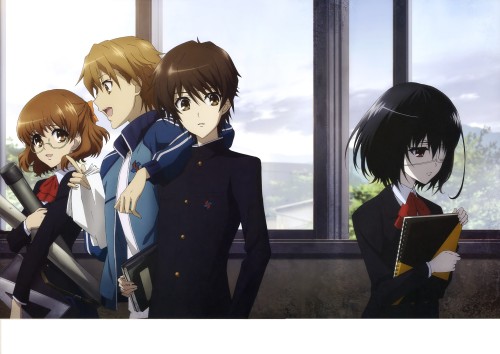
Mei’s eyepatch symbolizes her shirking of responsibility.In a similar way Rikka in Love, Chunbiyu shirks her responsibility of growing up.Not all eyepatch girls shirk, but they retain an air of mystery and otherworldliness that Another and similar stories leverage.
Koichi is a clueless nice guy that acts as a vessel for the audience since he’s the outsider. He discovers the facts with the audience. While in Another this works, the bland protagonist is an overdone trope in anime, as I’ve written about often over the years. This character has its uses, but when its overdone, such a character loses its effectiveness. All character tropes have their uses, and when used well, can enhance the story. The trick is tweaking the trope to make it interesting. Mei is interesting with her suggested guilt. Koichi’s good treatment of Mei and his resistance to peer pressure keeps him from becoming completely blank. Mei is the character focus of the story and the other characters act as foils to her, representing the emotions she doesn’t show. Koichi acts as an observer for her story and as the catalyst character. Usually the catalyst character is the girl, so this provides an interesting change in role. Koichi plays a similar role as Ishmael in Moby Dick. Koichi and Ishmael serve as observer for a difficult-to-understand main character: Mei for Koichi and Captain Ahab for Ishmael. Ishmael has more personality than Koichi, or, at least, appears more forceful and confident.
Another held my interest during my revisit. It plays with some questions about human behavior. It’s set-piece deaths, such as the infamous umbrella scene, are creative. Mei remains an interesting character. The eyepatch girl era remains with us. Many men also sport the patch, most often the pirate variety. Eyepatches aren’t new to anime, but, such as around 2012, we sometime see clusters of certain character design elements. Bicolored hair, for example, has been quite common recently. I wonder when more naturalistic character designs, similar to the 1980s era will return. We’ve already seen glimmers with animations like Castlevania. Anime like Another will look more dated once anime shifts back toward naturalism.
